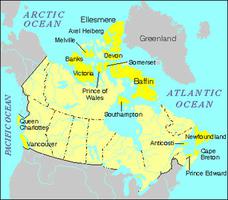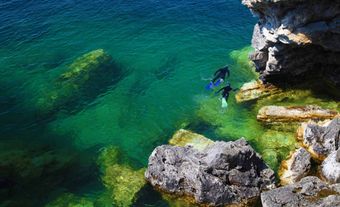
Prince of Wales Island, Nunavut, 33 339 km2, is the eighth-largest island in the Arctic Archipelago. Composed almost entirely of sedimentary bedrock formations, its northern part is hilly, reaching up to 415 m; the rest is gently undulating. The vegetation is sparse polar desert and semidesert, but well-vegetated broad valleys occur, especially in the east. Muskoxen are common, mainly in the northeast. Peary caribou are also common, especially in the north. The shores of the island were explored during the Franklin search expeditions in 1851 under Captain T.H. Austin and in 1852 under William Kennedy.

 Share on Facebook
Share on Facebook Share on X
Share on X Share by Email
Share by Email Share on Google Classroom
Share on Google Classroom

